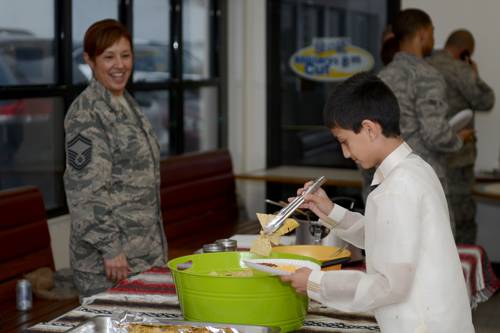
FAQ About The Impact of Cultural Appropriation in Culinary Arts

What is cultural appropriation in culinary arts?
Cultural appropriation in culinary arts refers to the adoption or use of elements of one culture's cuisine by members of another culture, often without permission or understanding of the cultural significance of these elements. This can include using traditional recipes, ingredients, or cooking methods in ways that disregard their original cultural context or meaning.

How does cultural appropriation differ from cultural appreciation in cooking?
Cultural appreciation involves a respectful and informed approach to understanding and acknowledging the origins and cultural significance of a cuisine. It often includes collaborating with individuals from the culture being represented and sharing authentic experiences. In contrast, cultural appropriation may involve exploitation or an insincere use of cultural elements solely for personal gain, which can misrepresent or trivialize the culture's traditions.

Why is cultural appropriation in cuisine controversial?
Cultural appropriation in cuisine is controversial because it can lead to the misrepresentation and dilution of cultural dishes. It often involves larger power dynamics where dominant cultures adopt elements from marginalized cultures without proper acknowledgment or benefit sharing. This can result in economic exploitation and the overshadowing of the authentic voices and contributions from the culture of origin.

Can cultural appropriation have positive impacts on culinary arts?
While cultural appropriation often carries negative connotations, it can sometimes lead to increased visibility and interest in a particular cuisine, potentially benefiting the originating culture by inviting curiosity and engagement. However, this positive impact typically requires an ethical and respectful approach that acknowledges and uplifts the contributions of that culture.

What are some examples of cultural appropriation in culinary arts?
Examples of cultural appropriation in culinary arts include using traditional dishes in a way that misrepresents their cultural significance. For instance, a Western chef might take a traditional Chinese dish, alter its ingredients and style for mass appeal, and then market it without crediting or understanding the original culture's contribution. Another example could be renaming dishes without acknowledgment of their true origins, stripping away their history and cultural meaning.

How can chefs avoid cultural appropriation when exploring new cuisines?
Chefs can avoid cultural appropriation by practicing cultural sensitivity and awareness. This involves learning about the history and traditions behind a dish, seeking guidance from individuals native to that culture, and giving proper credit. It also involves engaging with and supporting communities from the originating culture, potentially through partnership or acknowledgment in their business models.

What role do power dynamics play in cultural appropriation in culinary arts?
Power dynamics are central to cultural appropriation, where typically a more dominant culture co-opts elements of a less dominant one without equitable exchange or recognition. This often results in the minority culture being marginalized or economically disadvantaged, as their contributions are exploited by those in a position of power, who reap the benefits without adequate compensation or acknowledgment.

How can consumers be mindful of cultural appropriation in the foods they consume?
Consumers can be mindful by educating themselves about the origins and significance of the foods they enjoy. Supporting restaurants and chefs that respect and authentically represent various cuisines can help, as can being critical of establishments that may exploit cultural elements without proper recognition or context. Additionally, opting for direct interaction and learning opportunities with the cultures behind the cuisines fosters a more genuine and respectful appreciation.

What is the potential economic impact of cultural appropriation on traditional cuisines?
The economic impacts can be significant, as appropriation can deprive local communities and cultures of their financial stake in their culinary traditions. When larger businesses exploit these dishes without credit, local restaurants and entrepreneurs might lose their market share. Fair practice involves promoting and economically supporting the originators of these culinary arts.

Can cultural appropriation contribute to innovation in culinary arts?
Cultural cross-pollination can lead to innovation, but it's essential to differentiate between inspiration and appropriation. Innovation should involve mutual respect, equitable partnerships, and acknowledgment of the contributions of all cultures involved. Properly managed, such exchanges can lead to exciting new developments in the culinary world while celebrating and respecting the various cultures involved.

What are some misconceptions about cultural appropriation in cooking?
A common misconception is that any culinary innovation involving another culture's cuisine is appropriation. While sharing and being inspired by other cultures is a natural and enriching part of human culinary evolution, problems arise when this sharing occurs without consent, understanding, or acknowledgment of the source. Cultural exchange should be a two-way street, benefiting and respecting all parties involved.

How has globalization affected cultural appropriation in culinary arts?
Globalization has vastly increased the exchange and accessibility of various cuisines, leading to both positive and negative outcomes. It allows for greater exposure to and appreciation of world foods but also increases instances of cultural appropriation as distant cultures attempt to replicate or commodify these dishes without proper contextual understanding.

Should traditional recipes be protected from cultural appropriation?
Many argue that traditional recipes should be protected as part of cultural heritage. Protecting these recipes could involve legal measures or employing certification processes like geographic indication, which can help ensure that the cultural and historical significance of a dish is preserved and respected.

What steps can culinary institutions take to address cultural appropriation?
Culinary institutions can address cultural appropriation by incorporating cultural sensitivity training and offering courses that highlight the significance of cultural heritage in cuisines. They can also promote inclusivity by inviting chefs and culinary experts from diverse backgrounds to share their knowledge and perspectives.

How does cultural appropriation in culinary arts affect cultural identity?
Cultural appropriation can undermine cultural identity by diluting the unique aspects of a culture's cuisine, leading to a loss of authenticity and heritage. This can contribute to cultural homogenization, where the rich diversity and significance of traditional dishes are overshadowed by their adapted, often commodified, versions.

How are food media and influencers involved in culinary cultural appropriation?
Food media and influencers often play a significant role in shaping public perceptions of different cuisines. When they fail to credit the origins of dishes or over-simplify their preparation and significance, they contribute to cultural appropriation. Responsible media practices include acknowledging the cultural roots and providing platforms for authentic voices from the culinary traditions being represented.

Can food festivals contribute to cultural appropriation?
Food festivals can contribute to cultural appropriation if they depict cuisines without context or understanding, often prioritizing entertainment over education. However, they can also serve as platforms for cultural exchange and appreciation when conducted inclusively, engaging directly with the respective cultural representatives and providing educational insights about the dishes presented.

What are some ways to celebrate cultural diversity in cooking without appropriating?
Celebrating cultural diversity in cooking involves respectful engagement and collaboration. This includes learning directly from authentic sources, sharing credit, and ensuring that the cultural narratives remain intact. By immersing oneself responsibly into diverse culinary arts, appreciating and highlighting the stories behind the food, individuals can honor and uplift the cultural heritage involved.

Are there any legal protections against cultural appropriation in culinary arts?
Legal protections specifically against cultural appropriation in culinary arts are limited. However, some elements can be protected by intellectual property laws like trademarks or geographic indications. These legal tools help protect culturally significant foods by recognizing and affirming their origins, ensuring that authentic productions are economically supported and culturally respected.

What is the role of education in reducing cultural appropriation in the culinary field?
Education plays a crucial role in mitigating cultural appropriation in culinary arts by fostering awareness and sensitivity around the significance of cultural traditions in food. Culinary programs that emphasize cultural education can cultivate chefs and consumers who are knowledgeable and respectful of the cuisines they engage with, promoting an environment of appreciation rather than appropriation.
